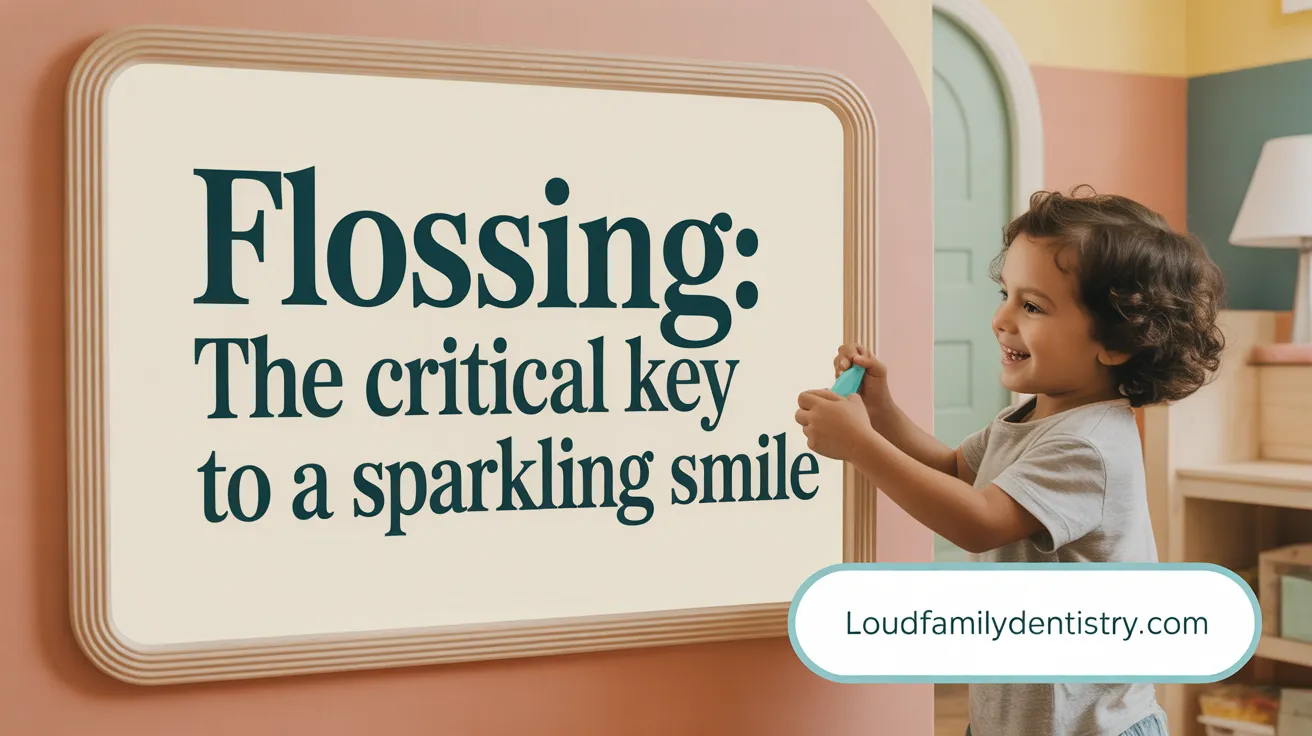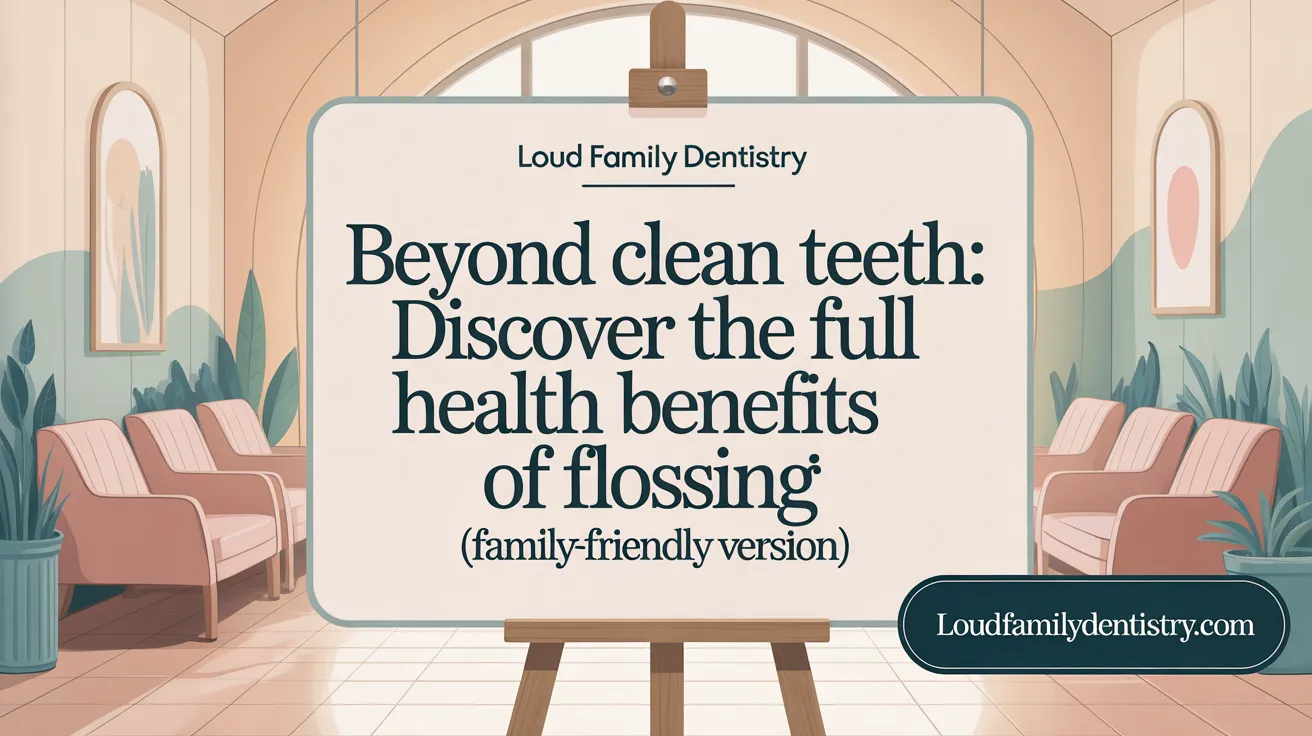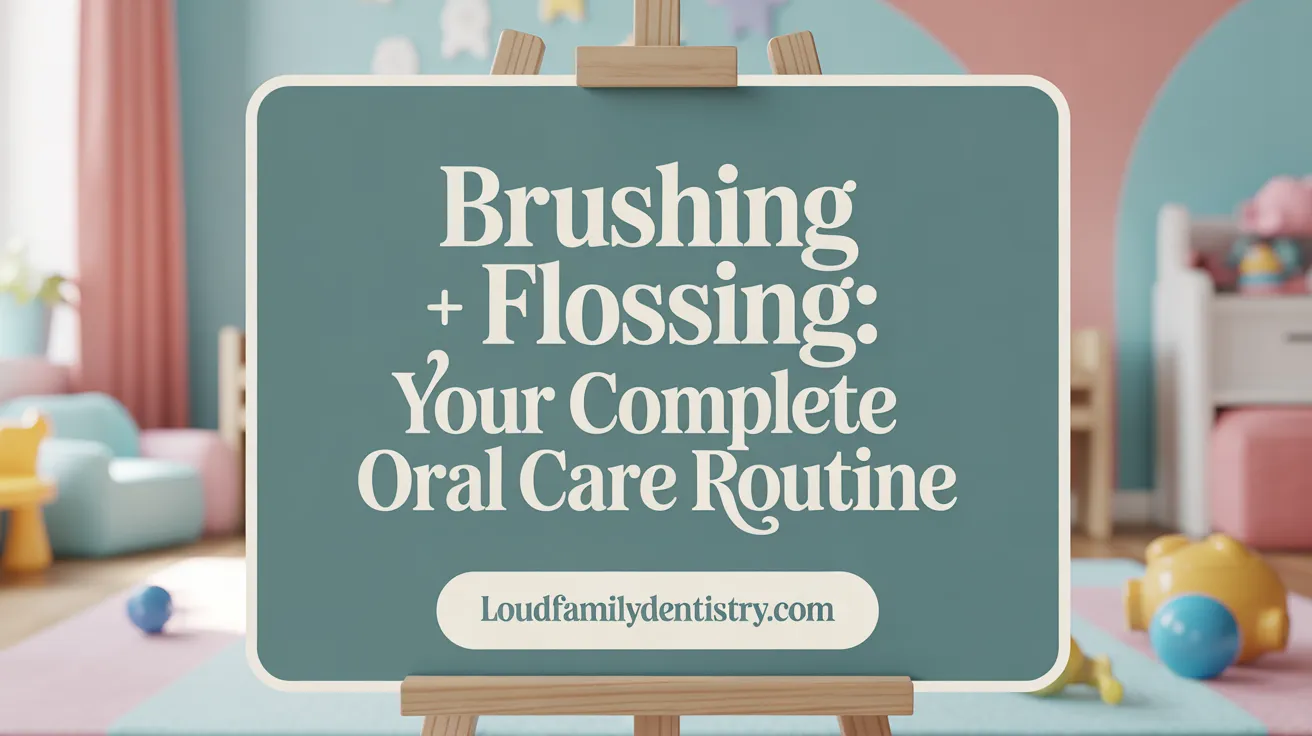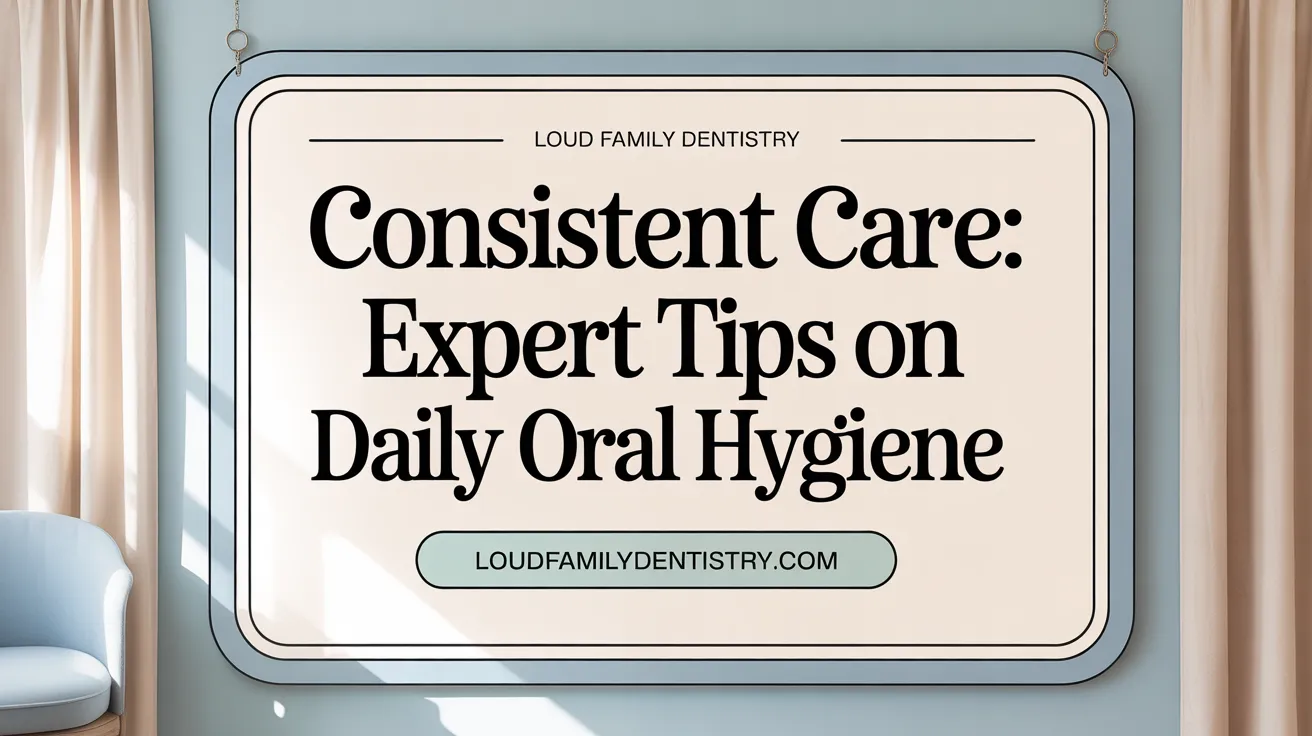Understanding the Vital Role of Flossing in Oral Hygiene
While brushing teeth has long been recognized as a cornerstone of oral health, flossing is equally crucial yet often overlooked. This article explores why flossing is just as important as brushing, detailing the health benefits, proper techniques, and how the two combine to ensure comprehensive dental care. Learn why incorporating flossing into your daily routine is a simple yet powerful step toward a healthier mouth and overall well-being.
The Critical Importance of Flossing for Oral Health

Why is flossing important for oral health?
Flossing plays a crucial role in maintaining a healthy mouth by targeting areas that brushing alone cannot clean. It effectively removes plaque and food particles lodged between teeth and beneath the gum line, where bacteria thrive and can lead to cavities and gum disease.
Plaque is a sticky film of bacteria that forms on teeth, which if left unremoved, can harden into tartar and cause inflammation of the gums, known as gingivitis. Over time, this can progress to more severe conditions like periodontitis, risking tooth loss.
Proper flossing involves using about 18 inches of floss, gently curving it around each tooth in a ‘C-shape’ and sliding it beneath the gumline. Regular flossing, usually once daily before bedtime, helps prevent the development of cavities, tartar buildup, and gum issues. It also reduces bad breath caused by trapped food debris and bacteria.
Even though some studies indicate limited long-term evidence, professional dental recommendations affirm flossing's benefits. It is a low-cost, simple habit that complements brushing, contributing to overall dental health and preventing systemic health issues linked to gum disease, such as cardiovascular problems.
Additional benefits include:
- Making teeth look whiter and healthier with consistent cleaning.
- Stimulating gums for better gum tissue health.
- Preventing the hardening of plaque into calculus, which can only be professionally removed.
- Overall, flossing reduces oral health costs by preventing serious dental conditions.
Incorporating flossing with toothbrush use and regular dental checkups forms a comprehensive approach. Even with some scientific debates, the consensus remains that daily flossing supports healthier teeth and gums, ultimately promoting overall well-being.
Health Benefits of Flossing: Beyond Just Clean Teeth

What are the health benefits of flossing?
Flossing offers more than just a clean smile. This simple yet crucial practice effectively removes plaque, bacteria, and food debris from between teeth and beneath the gumline—areas that brushing alone might miss.
Regular flossing significantly lowers the risk of developing gum diseases such as gingivitis and periodontitis. These conditions, if untreated, can cause inflamed, bleeding gums and even lead to tooth loss. By disrupting plaque buildup early, flossing helps maintain healthier, stronger gums.
Cavities and bad breath are common dental problems caused by bacterial activity and trapped food particles. Flossing reduces these issues by cleaning tight spaces where bacteria thrive, ensuring fresh breath and fewer cavities.
Beyond oral health, flossing plays a role in overall systemic health. Chronic gum inflammation has been linked to increased risks of heart disease, diabetes, and stroke. By keeping gums healthy through daily flossing, you may help reduce systemic inflammation and related health conditions.
In addition to health benefits, flossing can improve the appearance of your teeth. Removing plaque and tartar prevents discoloration and stains, contributing to a brighter smile.
In summary, incorporating flossing into your daily routine supports comprehensive health. It is a low-cost, effective method that protects your mouth and may reduce the risk of serious health issues.
How Flossing and Brushing Work Together for Comprehensive Dental Care

What are the distinct roles of brushing and flossing?
Brushing and flossing are both vital for maintaining good oral health, but they serve different functions. Brushing primarily removes plaque, bacteria, and surface stains from the front, back, and chewing surfaces of teeth. It helps prevent decay, tartar buildup, and freshens breath. Flossing, on the other hand, focuses on cleaning between teeth and below the gumline, where a toothbrush can't reach effectively. It dislodges trapped food particles, plaque biofilm, and bacteria in tight spaces, reducing the risk of gum inflammation, gingivitis, and cavities.
How does flossing complement brushing for comprehensive dental care?
Flossing enhances the effectiveness of brushing by cleaning the interdental areas — the spots between teeth and beneath the gums. Since brushing alone leaves about 40% of tooth surfaces uncleaned, especially between teeth, flossing fills this gap. It helps prevent the formation of plaque and calculus in areas prone to buildup, which can lead to gum disease and decay.
Flossing also helps reveal any problem spots in your mouth, such as bleeding gums or areas with plaque accumulation. When combined with brushing, it ensures a thorough removal of harmful bacteria and debris. This combined routine reduces the risk of periodontal disease and supports overall oral health. Although long-term studies on its effects are limited, flossing is a low-cost activity that significantly contributes to comprehensive dental care.
How does flossing compare to brushing in terms of significance?
Both practices are equally important for optimal oral health. Brushing effectively removes plaque from visible surfaces, preventing cavities and surface stains. Flossing tackles the hidden spaces where bacteria can thrive, helping to prevent gum disease and interproximal cavities.
Using floss before brushing can improve fluoride absorption from toothpaste, offering added protection against cavities. Proper flossing techniques—such as wrapping about 18 inches of floss around fingers, curving it into a 'C-shape' around each tooth, and gently sliding it beneath the gumline—maximize its benefits.
Research indicates that flossing combined with brushing results in lower levels of plaque and gingivitis. While some limitations exist in measuring long-term effects comprehensively, the consensus remains: neither can replace the other. Their combined use forms the backbone of thorough oral hygiene.
How can combining these practices enhance overall dental hygiene?
Integrating flossing with brushing creates a synergistic effect, providing comprehensive cleaning of all tooth surfaces. Flossing reduces bacterial load and prevents plaque from hardening into tartar, which only professional cleaning can remove. This prevents the development of more serious gum disease, such as periodontitis, and cavities.
In addition, using interdental cleaning tools like water flossers or interdental brushes—along with traditional floss—can further improve plaque removal, especially in hard-to-reach areas. Maintaining a regular schedule—flossing at least once daily before bed—ensures maximum protection against bacterial buildup.
Expert recommendations on complementary hygiene practices
Dental professionals stress that both brushing and flossing are necessary for effective oral care. The American Dental Association recommends brushing twice daily for two minutes and flossing at least once a day. Proper technique, consistency, and incorporating tools like water flossers can heighten results.
Regular dental visits for professional cleaning and exams complement daily routines. Practices such as starting flossing early in childhood and incorporating mouthwash enhance overall oral health.
| Aspect | Brushing | Flossing | Combined Benefit |
|---|---|---|---|
| Main focus | Removing plaque and stains from all major tooth surfaces | Cleaning between teeth and under gumline | Complete removal of plaque and debris |
| Effectiveness | Removes surface bacteria and stains | Dislodges trapped food, plaque biofilm, and bacteria in tight spaces | Reduces overall bacterial count, prevents gingivitis and decay |
| Recommended frequency | At least twice daily, 2 minutes each session | Once daily, preferably before bedtime | Maintains consistent oral hygiene and prevents disease progression |
| Additional tools | Electric or manual toothbrush with fluoride toothpaste | Waxed floss, dental picks, interdental brushes, water flossers | Customizable approaches for maximum plaque removal |
| Impact on overall health | Prevents tooth decay, freshens breath, contributes to heart health | Prevents gum disease, reduces systemic health risks like heart disease | Promotes healthier gums and potentially reduces systemic illness risk |
Ensuring a comprehensive approach by combining these practices forms the foundation of a healthy, bright smile and reduces long-term dental problems.
Mastering Proper Flossing Techniques for Maximum Benefits

What are the proper techniques for flossing to maximize its benefits?
Proper flossing is simple but very effective when done correctly. It starts with using about 18 inches of dental floss, which should be enough to allow for a fresh section of floss for each tooth.
Wrap most of the floss around your middle fingers, leaving a few inches to work with. With your thumbs and index fingers, gently guide the floss between your teeth using a zigzag or gentle sawing motion. Once the floss reaches the gumline, curve it into a C-shape around each tooth. This shape helps the floss clean beneath the gumline where plaque and bacteria often hide.
Then, move the floss up and down along the sides of each tooth, making sure to reach just below the gum tissue but without forcing or snapping the floss, which could injure your gums. Use a clean section of floss for every tooth to prevent spreading plaque or bacteria.
Flossing should be done gently but thoroughly, covering all sides of each tooth. This routine helps remove food particles and plaque, reducing the risk of cavities and gum disease.
It's best to floss once a day, ideally after meals or before bedtime. Consistent daily flossing plays a crucial role in maintaining healthy teeth and gums by accessing areas that toothbrushes can't reach, such as beneath the gumline and tightly between teeth.
Incorporating proper flossing techniques into your daily oral hygiene routine ensures maximum benefits, including cleaner teeth, healthier gums, and a brighter smile.
The Significance of Consistent Daily Flossing and Expert Perspectives

What role does flossing play in preventing dental issues?
Flossing is essential for maintaining good oral health. It effectively removes plaque and food debris from between teeth and beneath the gum line—areas that toothbrushes cannot reach easily. This removal is crucial because plaque, a sticky film of bacteria, can lead to cavities, gum inflammation, and periodontal diseases such as gingivitis and periodontitis.
By regularly flossing, you can significantly reduce bacterial buildup that causes gum disease. It also helps prevent the formation of tartar or calculus, which, once hardened, can only be removed professionally. Further, flossing contributes to fresher breath and a brighter smile by cleaning the mouth's tight spaces.
Long-term, consistent flossing reduces the risk of systemic health issues linked to gum disease, including cardiovascular diseases and diabetes. Incorporating this habit into your daily routine ensures healthier teeth, gums, and overall well-being.
Is there evidence and expert opinion supporting the necessity of flossing?
Yes, scientific research and dental expert opinions support regular flossing. Multiple studies, including a notable analysis published in the Journal of Periodontology, demonstrate that flossing combined with brushing significantly decreases plaque and gingivitis.
Dental professionals universally endorse flossing because it addresses areas that brushing alone cannot effectively clean. While large, long-term population studies are limited—mainly due to practical and financial challenges—the existing short-term evidence and clinical consensus advocate for its continued use.
Experts emphasize proper technique—wrapping about 18 inches of floss around fingers and carefully curving it into a C-shape around each tooth—to maximize benefits and minimize gum irritation. Alternative tools like water flossers and interdental brushes are also recommended when traditional flossing is difficult.
Given its low cost, minimal risk, and potential for preventing more costly dental treatments, flossing remains a recommended part of daily oral hygiene supported by dentists worldwide.
What is the significance of maintaining a daily flossing routine?
A daily flossing routine is vital for removing plaque and food particles from between teeth and below the gumline—areas that toothbrushes cannot access efficiently. Regular flossing helps prevent the initial stages of gum disease, such as gingivitis, which can escalate into destructive periodontitis if untreated.
Consistent flossing reduces the risk of cavities forming between teeth, where decay is most likely to develop. It also controls bad breath caused by bacterial buildup and bacteria-related infections that might influence systemic health conditions like heart disease and diabetes.
To enhance effectiveness, many recommend techniques such as the C-shape method, gentle sliding, and careful movement to avoid tissue injury. Tools like floss picks, water flossers, or interdental brushes can make daily routines easier, especially for those with braces or limited dexterity.
Maintaining this habit supports overall long-term dental health, reduces potential treatment expenses, and promotes healthier gums and teeth. Expert advice underscores that consistency and proper technique are the foundation of effective flossing, making it an indispensable part of daily oral hygiene.
Flossing: An Indispensable Partner to Brushing
Flossing stands as an essential pillar alongside brushing in any effective oral hygiene routine. By targeting the tight spaces between teeth and along the gumline where brushes cannot reach, flossing prevents plaque buildup, gum disease, and tooth decay. Although often underutilized, adopting a proper and consistent flossing practice enhances the benefits of brushing, contributing to healthier teeth, fresher breath, and reduced risks of systemic diseases. Supported by dental experts and multiple studies, flossing is an accessible, low-cost, and vital habit for lasting oral health. Embracing the combined power of brushing and flossing empowers individuals to maintain a radiant smile and overall well-being.
References
- Daily Flossing Is Just as Important as Brushing: Here's Why
- Is It Worse to Skip Brushing Your Teeth or Flossing? - Healthline
- Ask the Expert: Do I Really Need to Floss?
- Why Brushing, Flossing, and Mouthwash are Important for Oral Health
- Why Flossing Is Just as Important as Brushing: Choosing Bowdental ...
- Which comes first, brushing or flossing? New study shows that we ...
- Brushing vs Flossing: Which Is More Important? - Parkwood Dental
